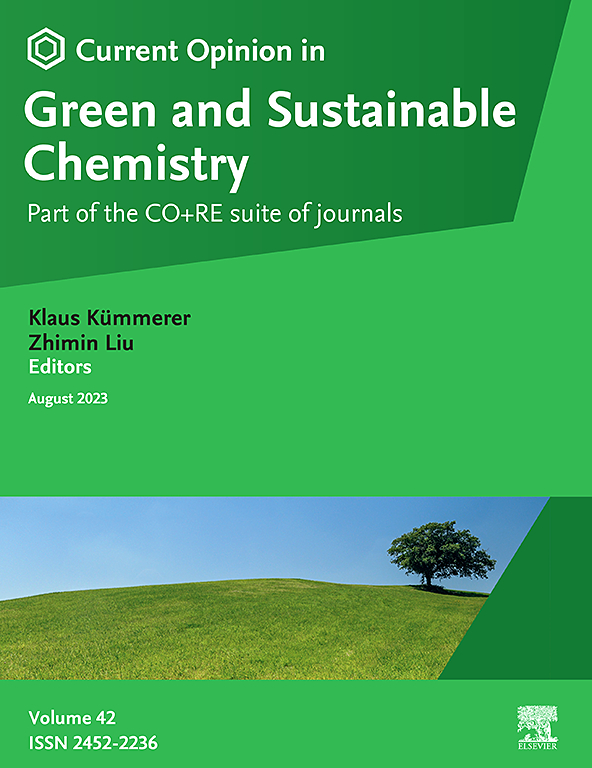Primary and secondary waste in (bio)catalysis: What matters is not what is produced but what permanently remains!
IF 9.4
2区 化学
Q1 CHEMISTRY, MULTIDISCIPLINARY
Current Opinion in Green and Sustainable Chemistry
Pub Date : 2025-02-01
DOI:10.1016/j.cogsc.2025.101003
引用次数: 0
Abstract
(Bio)catalysis creates waste, composed of wastewater and an organic fraction. Different metrics are used for the environmental impact of processes, being E-Factor and process mass intensity (PMI) the prominent ones. These metrics are typically applied to wastewater and spent organic fraction, which is the process “Primary Waste.” However, “Primary Waste” is industrially treated before it is released to the environment. When treating “Primary Waste,” CO2 is generated, from the wastewater treatment plant and from the organic fraction incineration. That CO2, coined as “Secondary Waste,” remains in the planet and thus should be the target for environmental assessments. When E-Factor and PMI calculated from “Primary Waste” are compared to the values of produced CO2, results mismatch because the CO2 depends on the proportion wastewater/organic fraction since incineration leads to higher CO2 production than wastewater treatment. Sustainable options for (bio)catalysis would be process intensification, incorporating renewable energy and biogenic solvents (neutral carbon), and developing (new) wastewater treatment strategies to deliver pure(r) water effluents to the environment.

(生物)催化中的初级和次级废物:重要的不是产生什么,而是永久留下什么!
(生物)催化产生由废水和有机组分组成的废物。不同的指标用于过程的环境影响,其中e因子和过程质量强度(PMI)是突出的两个。这些指标通常应用于废水和废有机部分,这是“初级废物”的过程。然而,“初级废物”在排放到环境之前是经过工业处理的。当处理“初级废物”时,从废水处理厂和有机部分焚烧产生二氧化碳。被称为“二次废物”的二氧化碳仍然留在地球上,因此应该成为环境评估的目标。当从“初级废物”中计算出的E-Factor和PMI与产生的CO2值进行比较时,结果不匹配,因为CO2取决于废水/有机组分的比例,因为焚烧导致的CO2产生量高于废水处理。(生物)催化的可持续选择将是过程强化,纳入可再生能源和生物溶剂(中性碳),并制定(新的)废水处理战略,向环境排放纯(或)废水。
本文章由计算机程序翻译,如有差异,请以英文原文为准。
求助全文
约1分钟内获得全文
求助全文
来源期刊

Current Opinion in Green and Sustainable Chemistry
Chemical Engineering-Catalysis
CiteScore
16.00
自引率
2.20%
发文量
140
审稿时长
103 days
期刊介绍:
The Current Opinion journals address the challenge specialists face in keeping up with the expanding information in their fields. In Current Opinion in Green and Sustainable Chemistry, experts present views on recent advances in a clear and readable form. The journal also provides evaluations of the most noteworthy papers, annotated by experts, from the extensive pool of original publications in Green and Sustainable Chemistry.
 求助内容:
求助内容: 应助结果提醒方式:
应助结果提醒方式:


